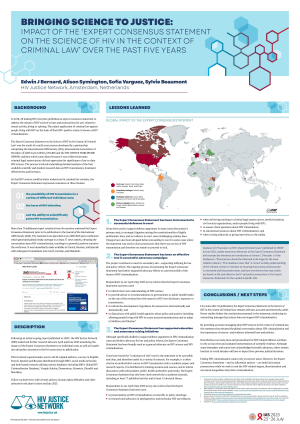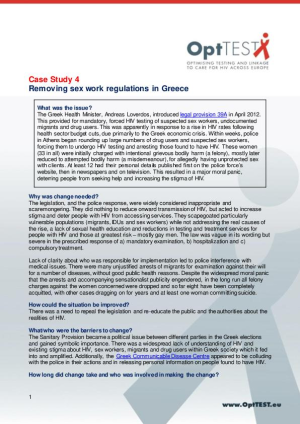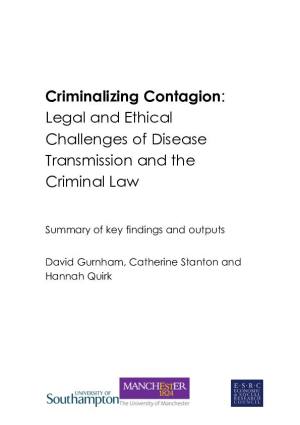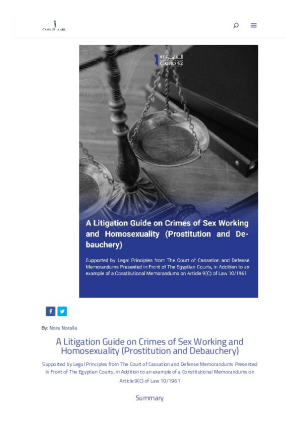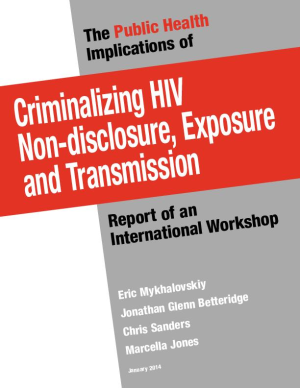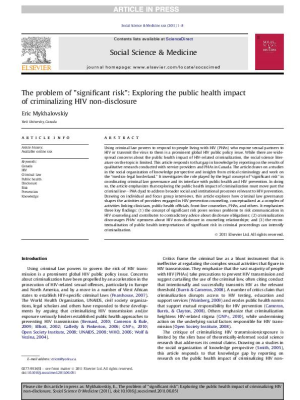Bringing Science to Justice: Impact of the Expert Consensus Statement on the Science of HIV in the context of criminal law over the past five years (Poster)
Research findings on the five-year impact of the ‘Expert Consensus Statement on the Science of HIV in the Context of Criminal Law’, presented at the International AIDS Conference (IAS 2023). The research examined the impact of the Expert Consensus Statement on individual cases as well as broader law and policy outcomes in the five years since its publication and found that the statement remains relevant, accurate and extremely useful. Newer studies bolster the conclusions presented in the statement, reinforcing its overarching message that science does not support HIV criminalisation.
Analysis of the national legislation of the Georgia related to SOGI and HIV
HIV Criminalization Legal and Policy Assessment Tool
This assessment tool is designed to help individuals and organizations, including state and local health departments, to assess the extent to which a jurisdiction’s laws and regulations impede HIV surveillance, facilitate privacy breaches, or criminalize HIV infection and related risk behaviors.
Attitudes of infectious disease doctors and epidemiologists at AIDS centres towards the criminalization of HIV in the Russian Federation
Survey Conducted to examine the attitudes of infectious disease specialists and epidemiologists at AIDS Centres towards the criminalisation of HIV in Russia.
- Alternative links
- Russian
OptTEST case study 4: Removing sex work regulations in Greece
In April 2012, the Greek police carried out a massive operation in downtown Athens, arresting drug users and sex workers, forcing them to undergo HIV testing and charging them with prostitution. This case study explores the response from human rights and HIV groups both in Greece and internationally and the following campaign to repeal the provision.
Criminalizing Contagion: Legal and Ethical Challenges of Disease Transmission and The Criminal Law Summary of Key Findings and Outputs (Nov 2014)
This seminar series1 addressed a series of questions and brought together experts from a range of disciplines to answer them. This document summarises the arguments of each of the papers presented over the course of this seminar series, gives details of outputs connected to it, and also provides information on how and by whom we anticipate findings being used.
A Litigation Guide on Crimes of Sex Working and Homosexuality
This an English Summary of the book “A Litigation Guide on Crimes of Sex Working and Homosexuality (Prostitution and Debauchery) “. The book aims to provide a litigation guide and a legal overview of principles and procedures to legal advocates and whoever wishes to know more about “prostitution” or “debauchery” crimes under Egyptian law.
The Public Health Implications of Criminalizing HIV Non-Disclosure, Exposure and Transmission: Report of an International Workshop
Explores key themes from the first international meeting focused on strengthening new empirical research on criminalization. Offers suggestions for future research on the public health implications of criminalizing HIV non-disclosure, exposure and transmission.
The problem of ‘significant risk’: Exploring the public health impact of criminalizing HIV non-disclosure
Emphasizes that the concept of significant risk undermines communication about transmission risk during HIV counselling and contributes to contradictory advice about disclosure obligations. Criminalization discourages openness about HIV non-disclosure in counselling relationships. The recontextualization of public health interpretations of significant risk in criminal proceedings can intensify criminalization.
HIV criminal prosecutions and public health: an examination of the empirical research
Concludes that HIV-related criminal laws either fail to influence or increase STI testing avoidance, unprotected anonymous sexual contacts, and avoidance of health care because respondents do not feel safe speaking with health professionals. Suggests HIV-related criminal laws compromise public health and clinicians’ abilities to establish therapeutic relationships and to undertake HIV prevention and treatment work.

